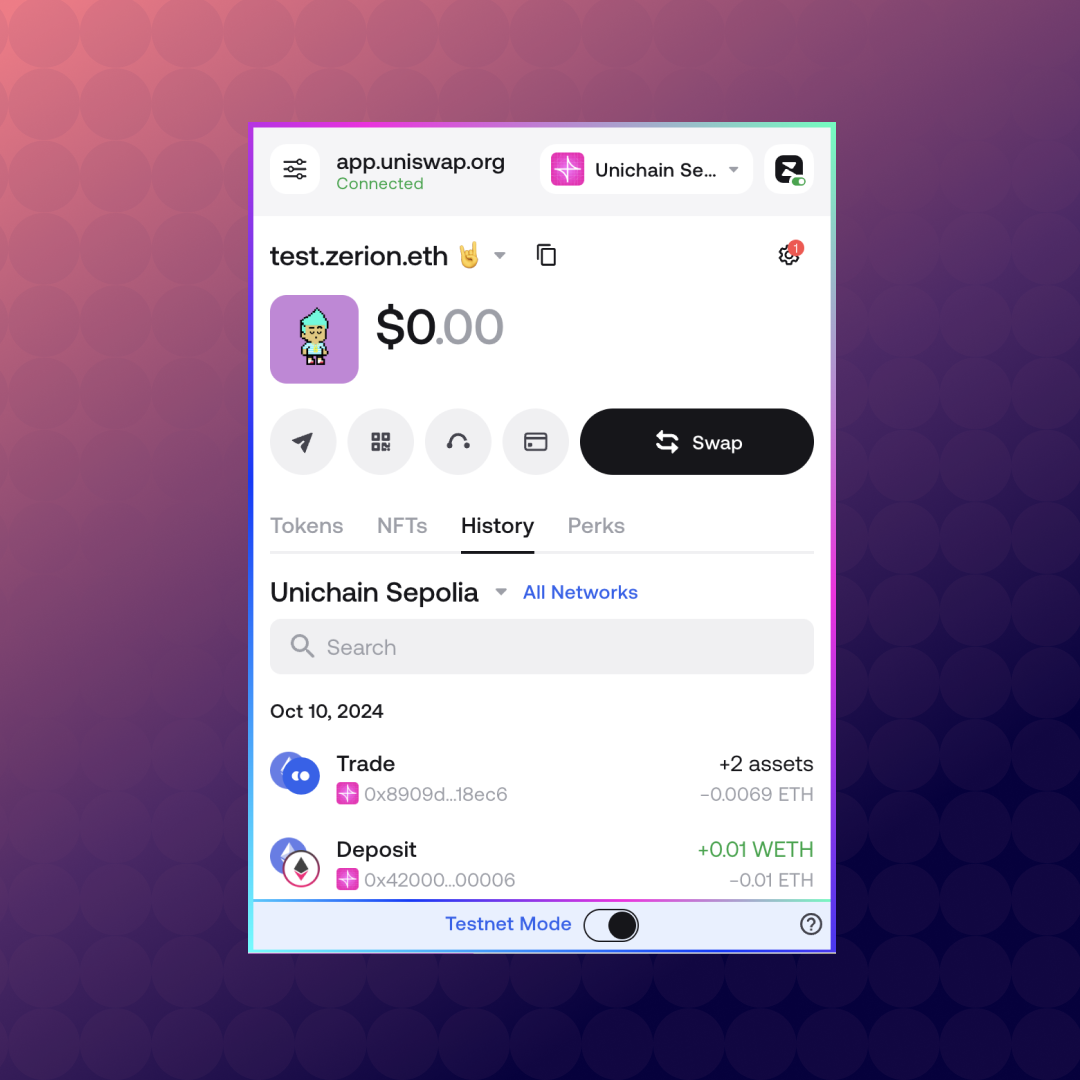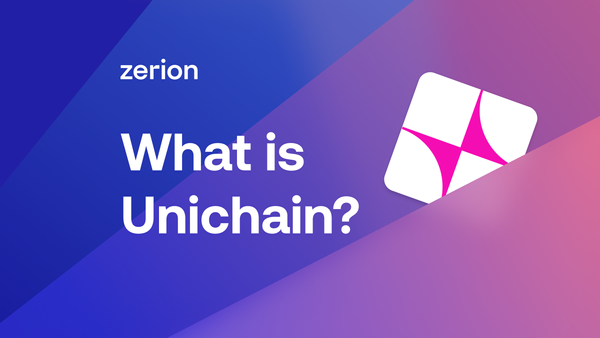With the launch of Unichain L2, Uniswap Labs, the DeFi OG, is ready to play its part in scaling Ethereum. Zerion API is a launch partner for Unichain, and we’re excited to share some alpha on Unichain and what you can expect from it.
What is Unichain?
Unichain is a Layer-2 network developed by Uniswap Labs.
As an optimistic roll-up on the Optimism Superchain, Unichain is a cheaper and faster network for DeFi, designed to be the home for liquidity from across chains.
Introducing @unichain — a new L2 designed for DeFi ✨
— Uniswap Labs 🦄 (@Uniswap) October 10, 2024
Fast blocks (250ms), cross-chain interoperability, and a decentralized validator network
Built to be the home for liquidity across chains pic.twitter.com/lqfJh6Ltio
Here’s what Unichain brings to the table:
- Near instant transactions — Unichain aims to reduce block time to 200-250 milliseconds, making the experience feel instant
- Low cost — up to 95% cheaper than mainnet Ethereum and cheaper than many L2s
- Liquidity hub from across chains — Unichain will support native interoperability with other Optimism networks, and Uniswap Labs will work on interoperability across other networks
Unichain can learn a lot from Uniswap Protocol, which has a wealth of experience with L2s.
After going multichain in 2021, Uniswap has consistently expanded its presence across Layer-2 networks. As of October 2024, the Uniswap Protocol supports 13 networks. While mainnet Ethereum still has the highest trading volumes on Uniswap, it now represents less than 20% of all swaps.
Uniswap users clearly like L2s. These networks are not only cheaper but are also attracting many of the most interesting new protocols and token launches.
However, liquidity fragmentation across L2s is a persistent problem — tackling this will be the main goal for Unichain.
What you can do on Unichain now
On October 10th, Unichain launched a public testnet. You can try making transactions to see how it works.
Zerion Wallet will natively support Unichain from day one. You can expect to see all your tokens and transaction history in a familiar interface.
Not everyone knows, but both Zerion and Uniswap Wallets rely on Zerion API to offer onchain data in human-readable formats: token prices, DeFi positions, NFT portfolio, transaction history, and more. In the upcoming releases, the API will provide additional endpoints like Profit and Loss (which you can see in Zerion Premium), historical data, and webhooks. If you plan to build on Unichain, you can already use Zerion API to query and fetch data for your app.
How to get started with Zerion Wallet
To get started with Unichain, here is what you can do:
- Install or open Zerion Wallet
- In Networks, select testnets and select Unichain Sepolia
- Claim Sepolia ETH from one of the faucets
- Bridge Sepolia ETH to Unichain
- Swap Sepolia ETH to USDC
In Zerion Wallet, you’ll see your tokens in the portfolio and your transactions in the history tab.

Portfolio, positions, and transactions data come from Zerion API.
If you want to use it in your app, you don’t need to know anything about blockchain. You can simply query all this data with a single endpoint Rest API. Sign up to try Zerion API for free.
What’s next
Unichain is expected to launch the mainnet soon. Closer to the mainnet release, the team might share more details about how the network will work and who is building on it. Sign up for Unichain’s new X account to make sure you don’t miss anything!
In 2025, Unichain plans to launch a validation network and provable block building, seeking to increase decentralization.
Zerion will support Unichain throughout this period, both in Zerion Wallet and in Zerion API for all our enterprise customers.

